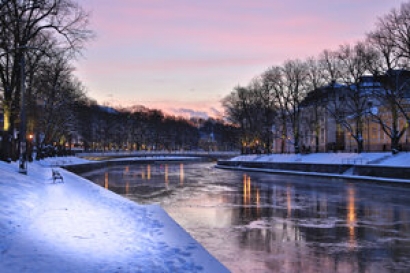
Mission Innovation has made an assessment about the potential avoided greenhouse gas emissions per year in 2030 enabled by Polar Night Energy’s sand-based high temperature seasonal heat storage and other similar competing innovations.
The result is ≈100 Mt CO2e/year in 2030. Mission Innovation ranks the results according to orders of magnitude, and this result places Polar Night Energy in the second highest category. No innovations have yet been ranked in the highest category. Polar Night Energy’s exact value in the assessment is 169.8 Mt CO2e/year in 2030.
"It means that according to the estimate our heat storages could potentially save almost double the CO2e emissions of the today’s New York City," says Polar Night Energy’s CEO Tommi Eronen.
Mission Innovation is a global initiative of 22 countries and the European Union, seeking to accelerate global clean energy innovation and make clean energy widely affordable and reliable. It was launched at the Paris Climate Conference in 2015.
Mission Innovation’s Avoided Emissions Framework was launched in conjunction with the release of the IPCC’s Special Report in 2018 and is increasingly seen as the de facto standard for impact assessments. Mission Innovation’s analysis opens a more profound dialogue between companies, investors, and different industries.
"It is great to see that our company has been recognized as having potential to really make a big impact for carbon neutral world," says Eronen.
Polar Night Energy’s heat storage enables the storage of renewable energy when energy production conditions are beneficial. The stored renewable energy can later be used in different energy demanding processes, replacing fossil-based combustion technologies that are common nowadays for heating and electricity production.
"The avoided emissions assessment of our solution was based on the amount of predicted surplus renewable energy production. However, as was also noted in the report, we are not just a solution for inevitable excess electricity, but a catalyst for accelerating the transition from fossil fuels to solar and wind power," Eronen concludes.
In Mission Innovation’s Net-Zero Compatible Innovations Initiative (NCI), assessments are being performed following the Avoided Emissions Framework (AEF) guidance. The methodology is based on best practices and provides an estimate of the avoided emissions potential in the year 2030, taking account of the decarbonisation expected.
The NCI assessment of Polar Night Energy’s innovation was initiated by Business Finland.
Source: Mission Innovation’s report: Sand-Based High Temperature Seasonal Heat Storage by Polar Night Energy Oy, Avoided Emissions Framework – Level 2 version 0.8 assessment, 2020. Read the report at https://polarnightenergy.fi/news
Polar Night Energy designs and builds high temperature & low emission heat storages for district heating and industrial applications.

